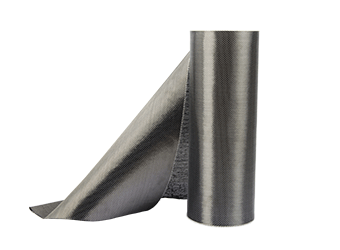Solutions
Horse Construction offers full range of structural strengthening materials with technical supports, documentation supports, products supports, project supports.
Crack Forms and Strengthening Methods of Flexural Members
A flexural member refers to a member whose section usually has bending moment and shear force acting together while axial force is neglected. The common flexural members are concrete beams and slabs, and the cracks mainly include vertical cracks, oblique cracks and longitudinal cracks.
vertical crack
Mainly caused by the bending moment, it mostly occurs at the bottom of the span of beam and plate members, and develops on the side of vertical beam and plate.
oblique crack
One is caused by shear force and generally occurs near the support at the bottom of the beam (most cracks are caused by the combined action of shear force and bending moment), starting from the lower part and developing along the 45° direction to the top of the mid-span. The other is caused by negative bending moment and shear force, which appears near the top surface of beam and plate support, and the shape is that the upper opening is large and the lower opening is small.
In addition, at the junction of the primary and secondary beams, due to the influence of the concentrated force of the secondary beams on the primary beams, there are also downward inclined cracks along both sides of the secondary beams. When the foundation subsides unevenly, the concrete ring beams, frame beams and foundation beams will all appear oblique cracks whose direction is consistent with the direction of the uneven subsidence of the foundation.
cracks along the tendons
It is mainly caused by the corrosion of steel bars and the expansion of iron oxide, which appears on the lower side of the beam or the steel bar on the bottom surface.
The failure forms caused by the above cracks are plastic failures. It is characterized by obvious deformation and cracks in advance, and people can take timely measures to remedy the cracks, and the danger is relatively small. Whether such cracks affect the safety of the structure should be determined according to the location, length, depth and development of the cracks.
For cracks in flexural members, the common reinforcement methods include the reinforcement method of pasting steel plates, the reinforcement method of outsourcing steel,
The reinforcement method of pasting fiber composite materials, etc., today we mainly talk about the reinforcement method of carbon fiber cloth.
When carbon fiber cloth is used to reinforce the normal section of such damaged components, the carbon fiber cloth is usually pasted on the tensile bottom surface of the component, such as the bottom of the beam and the bottom of the plate. Then, additional anchoring measures are set at the end to achieve the purpose of strengthening the member. The anchoring can be U-shaped hoop made of carbon fiber cloth or prefabricated steel U-shaped hoop. The specific construction process is as follows:
• Surface treatment
• Applying HM-180 primer
• Repairing and leveling with HM-180CE leveling adhesive
• Applying HM-180C3P carbon fiber adhesive
• Externally bonded Horse unidirectional carbon fiber wrap
• Applying HM-180C3P carbon fiber adhesive again
• Curing and protecting
You can find anything here you are in need of, have a trust trying on these products, you will find the big difference after that.

High strength, unidirectional carbon fiber wrap pre-saturated to form a carbon fiber reinforced polymer (CFRP) wrap used to strengthen structural concrete elements.

High strength, unidirectional carbon fiber fabric pre-saturated to form a carbon fiber reinforced polymer (CFRP) fabric used to strengthen structural concrete elements.

High strength, unidirectional carbon fiber sheet pre-saturated to form a carbon fiber reinforced polymer (CFRP) sheet used to strengthen structural concrete elements.